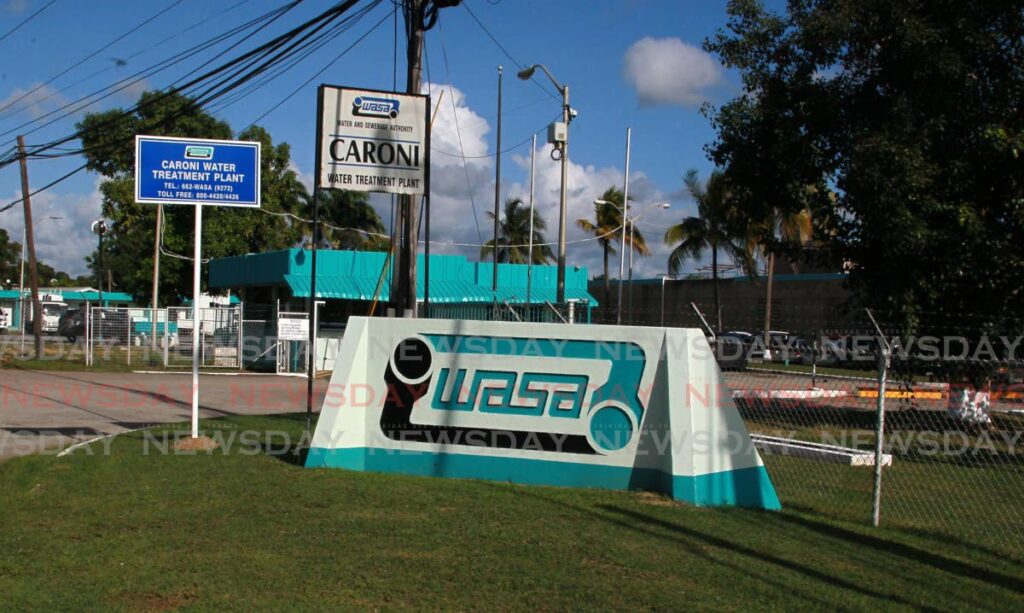WASA implements emergency measures to combat harsh dry season

The Water and Sewerage Authority (WASA) has implemented emergency measures to combat the effects of a harsh, five-month dry season that is threatening the country's water supply.
A WASA statement on May 13 said it established a Central Command Centre (CCC) to monitor production and supply 24 hours a day, increased its water trucking capacity; opened its call centre for 24 hours a day; added three phone numbers (463-8360/496-6738/709-7793) for use between 10 pm and 6 am; redirected supply to adversely affected areas; got Desalcott to provide additional water to south-west and south-central Trinidad; contracted Seven Seas Desalination to increase production by 300,000 gallons per day (gpd); reviewed water supply schedules; and prioritised supply for health institutions, senior citizens homes, schools and religious institutions.
It said all those measures were necessary because of relatively low rainfall compounded by the loss of water at reservoirs because of evaporation owing to excessive heat.
Altogether, WASA said, the harsh conditions shrunk the water supply by 35 million gpd.
At a media conference on May 13, WASA operations manager Shaira Ali said the reservoir levels were below its long-term average (LTA).
As of May 12, the Caroni/Arena Reservoir was at 35 per cent (LTA 60 per cent), Hollis Reservoir was at 48 per cent (LTA 49 per cent), Navet Reservoir was at 38 per cent (LTA 53 per cent) and Hillsborough Reservoir was at 48 per cent (LTA 58 per cent).
Ali said the shortfall had led to reduced production at the reservoirs' corresponding water treatment plants (WTP).
The production at the Caroni, Hollis, Navet, and Hillsborough WTPs have experienced production shortfalls of 33 per cent, 34 per cent, 17 per cent, and 14 per cent respectively.
Acting director of the Trinidad and Tobago Meteorological Service (TTMS) Shakeer Baig said the hot conditions were being driven by global climate change, the El Nino phenomenon, urbanisation and increased Sahara Dust episodes.
Those, he said, have resulted in drought-like conditions, water scarcity, increased bush fires and altered rainfall patterns.
Rainfall accumulation figures Baig presented showed that, apart from April, rain fall from January to date was significantly below the LTA. For instance, the LTA for rainfall in February is 46.9 millimetres (mm) but this year saw 3.5 mm in Piarco and 3.9 mm in Crown Point.
March's LTA is 31.5 mm but Piarco saw 5.7 mm while Crown Point saw 86.6. In April, Piarco saw 62.3 mm and Crown Point saw 56.4 mm. The LTA for the month is 58.8 mm. The LTA for May is 124 mm but, to date, there has only been 0.4 mm in Piarco and 0.1 mm in Crown Point.
Speaking at the media conference, Public Utilities Minister Marvin Gonzales cited last month's Caribbean Climate Outlook Newsletter which said 2024 is shaping up to be a year of extremes in the Caribbean with an intense heat season consisting of recurrent heat waves.
"Indeed, countries throughout the region have been experiencing the effects of this extreme weather.
"Just yesterday, our neighbours in Grenada implemented restrictions in water usage in an attempt to manage the impact of its driest dry season in 14 years.
"While in Guyana, agriculture has been severely affected by long and severe drought-like conditions, compelling the government to send food aid to certain regions within the country."

Comments
"WASA implements emergency measures to combat harsh dry season"